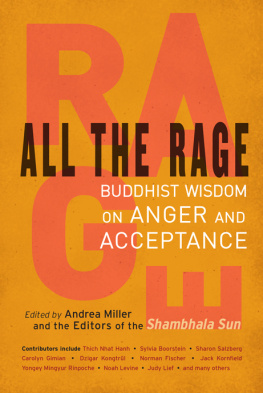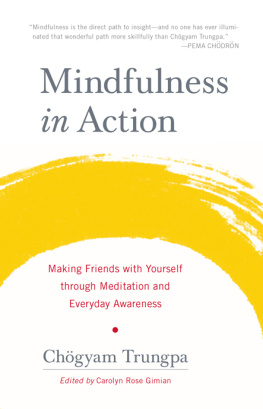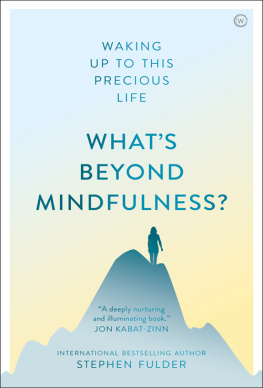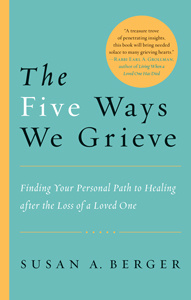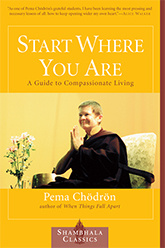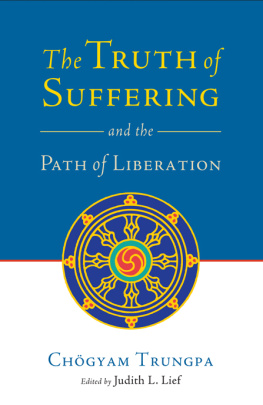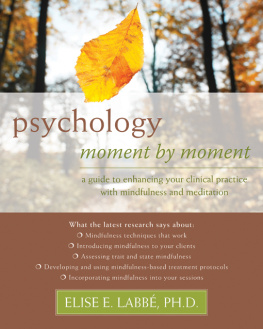Peppered with useful and startling meditations as well as wise reminders, this is a thoughtful approach to a difficult aspect of living.
NAPRA Review
Filled with meaningful examples of real people facing real problems. It provides us with the essential guideposts for embarking on the journey of life and the journey beyond.
Journal of Hospice and Palliative Nursing
A manual on how to die, how to relate to dying and death, how to open up to the stages beyond death. Liefs book is also a weave of stories, insights, advice, Buddhism and humor.
Shambhala Sun
Whether you will die tomorrow or fifty years from now, you need to read this book.
Bernie Glassman
A seasoned caregiver who walks the neophyte through the extending of ones self to another, Lief presents the issues and common difficulties at hand. She emphasizes the importance of attention to details, but centers on knowing what each patient wants for her or his situation. This defines effective compassion.
Florence Wald, M.N., F.A.A.N., a founder of the first hospice in the United States
Lief conveys the profound core of the teachings of Buddhism so that anyone can hear and understand. She shows us that in the end, it is kindness, compassion, and mindful attention that matter, and teaches us the simple skill of just beingin all its rawness, love, and painwith those who are dying.
Marilyn Webb, author of The Good Death: The New American Search to Reshape the End of Life
ABOUT THE BOOK
In Making Friends with Death, Buddhist teacher Judith Lief, whos drawn her inspiration from the Tibetan Book of the Dead, shows us that through the powerful combination of contemplation of death and mindfulness practice, we can change how we relate to death, enhance our appreciation of everyday life, and use our developing acceptance of our own vulnerability as a basis for opening to others. She also offers a series of guidelines to help us reconnect with dying persons, whether they are friends or family, clients or patients.
Lief highlights the value of relating to the immediacy of death as an ongoing aspect of everyday life by offering readers a variety of practical methods that they can apply to their lives and work. These methods include:
- Simple mindfulness exercises for deepening awareness of moment-by-moment change
- Practices for cultivating loving-kindness
- Helpful slogans and guidelines for caregivers to use
Making Friends with Death will enlighten anyone interested in coming to terms with their own mortality. More specifically, the contemplative approach presented here offers health professionals, students of death and dying, and people who are helping a dying friend or relative useful guidance and inspiration. It will show them how to ground their actions in awareness and compassion, so that the steps they take in dealing with pain and suffering will be more effective.
JUDITH LIEF is an acharya, or senior teacher, in the Shambhala Buddhist lineage of Chgyam Trungpa.
Sign up to learn more about our books and receive special offers from Shambhala Publications.

Or visit us online to sign up at shambhala.com/eshambhala.
Making Friends with Death
A Buddhist Guide to Encountering Mortality
JUDITH L. LIEF

Shambhala
Boston & London
2011
Shambhala Publications, Inc.
Horticultural Hall
300 Massachusetts Avenue
Boston, Massachusetts 02115
www.shambhala.com
2001 by Judith L. Lief
Cover photo by Graham Harrison
All rights reserved. No part of this book may be reproduced in any form or by any means, electronic or mechanical, including photocopying, recording, or by any information storage and retrieval system, without permission in writing from the publisher.
Library of Congress Cataloging-in-Publication Data
Lief, Judith L.
Making friends with death: a Buddhist guide to encountering mortality / Judith L. Lief.
p. cm.
Includes bibliographical references and index.
eISBN 978-0-8348-2257-3
ISBN 978-1-57062-332-5 (alk. paper)
1. DeathReligious aspectsBuddhism. 2. Religious lifeBuddhism. 3. BuddhismDoctrines. I. Title.
BQ4487.L48 2001
294.3423dc21
00-047026
BVG 01
To my husband, Chuck,
and to my daughters,
Jessica and Deborah
If all of us would make an all-out effort to contemplate our own death, to deal with our anxieties surrounding the concept of our death, and to help others familiarize themselves with these thoughts, perhaps there could be less destructiveness around us.
Elizabeth Kbler-Ross,
On Death and Dying
If one knows that what is born will end in death, then there will be love.
Sutra of Buddha Teaching the Seven Daughters
Let us deprive death of its strangeness, let us frequent it, let us get used to it; let us have nothing more often in mind than death.... We do not know where death awaits us: so let us wait for it everywhere. To practice death is to practice freedom.
Montaigne,
The Oxford Book of Death
AS YOU READ this book, you will notice that it includes a number of short exercises as well as instruction in meditation and contemplative practices. The primary meditation practice I introduce is a simple mindfulness practice that uses awareness of the breath to settle the mind. It is a simple practice, with a minimum of form. Contemplative practices have more form; they work with the contents of our mental-emotional world. Basically, contemplative practices involve sitting quietly and looking into our experience in some depth. For instance, the contemplation of death is a systematic way of exploring our concepts and feelings about impermanence and mortality. The contemplative practice of sending and taking is a way of looking deeply into our self-absorption and our potential to step beyond that.
In deciding which practices to include, I selected those meditative and contemplative practices that I personally have found to be most relevant and helpful in working with dying people and in exploring my own relationship to death. In my classes, I have taught these same practices to nurses, health professionals, hospice volunteers, and others with a depth of experience in working with the dying. I have also taught them to people who were dealing with serious illnesses themselves. They are meant to be put to use. As a rough guideline, set aside twenty to thirty minutes for each of the exercises. Do not rush through them.
In some ways, this is a how-to bookhow to get started with these contemplative and meditative practices and how to apply them in your life. If you would like to work with some of these practices further, you can set aside a little time each day to do so. You can take a break from your busy life for a while to work with this material. Then, when you are in the midst of activity again, you can use the six slogans in Part Three as reminders that you can continue working with your state of mind moment to moment, no matter what you are facing.
THIS BOOK is about life and death, and the interplay between the two. It is based on the teachings of the Buddhist traditionteachings that I first stumbled across in 1971, while living in New York City. At the time, I was a graduate student in sociology at Columbia University and in the odd and enviable position of being stranded in New York being paid to do nothing. I had been involved in the planning stages of a cross-cultural research project, and just at the point when I was to go to India for fieldwork, war broke out between India and Pakistan. In response to United States support for Pakistan, the Indian government withheld most visas for American researchers, and I was stuck. I couldnt go to India, so I had to stay in New York, and since my preliminary work had already been completed, I had nothing to do.
Next page



